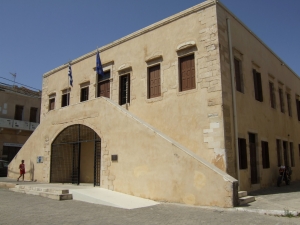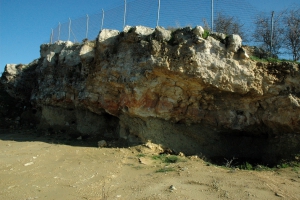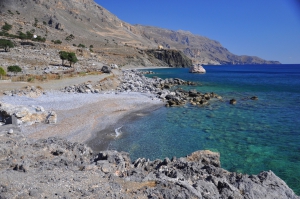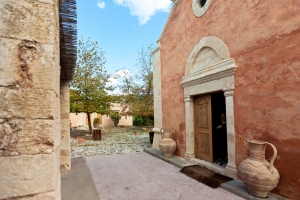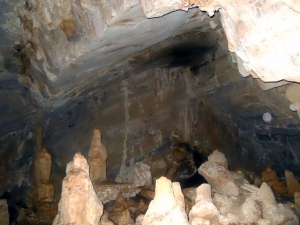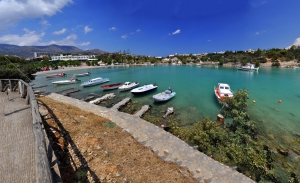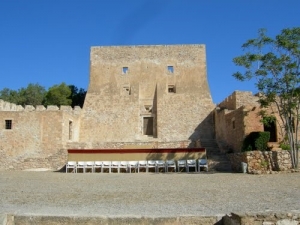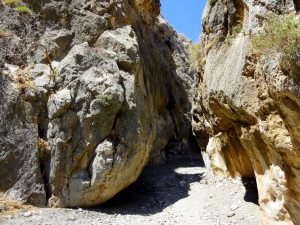The archaeological Museum of Kissamos was founded in 2005 and is housed in the Venetian - Turkish monument known as Diikitirio ("Headquarters"). Its exhibits provide a longitudinal picture of the region's history from prehistory to late antiquity, i.e. the early Christian Times.
The cave of Arkalochori, also known as Holy Cave, is situated at the South West side of Arkalochori village, specifically at the south west aisle of Profitis Ilias Church, 400m above sea level. A narrow entrance (0.70cm wide, 1.60cm tall) leads to the interior, where one cannot walk upright due to lack of space.
Behind the big hill west of the settlement Tris Ekklisies, there is a second stunning beach with fine sand, which is completely isolated and surrounded by the largest carob wood in Europe. The beach is called Pahia Ammos and is shaped at the exit of Agia Paraskevi Gorge, which also houses an unknown 105m high waterfall (only in winter).
The Monastery of Saint George in Karydi (in Apokoronas Province) is located about 2km east of Vamos village. The monastery was abandoned for many years but was restored in 1996 and today it is operating normally. The monastery is unique to Apokoronas province and is the most interesting monument of folk architecture in the prefecture of Chania.
Theriospilios has a total length of 44m, 25m maximum width and height 0,5 - 7m. After the entrance of the cave, the visitor enters a low hall with dimensions 7m x 8m. The following room is spectacular, with 37m length, 25m width and 1.6-7m height, with sloping floor. It is richly decorated and gives the visitor an excellent impression.
After leaving the sheltered beach of Amoudi behind you and taking the road leading to Elounda, you will soon meet one bay 1km north of the center of Agios Nikolaos, next to Hotel Minos Palace. It is a small pebbly and sandy cove, called Katholiko shaped in a very well protected narrow bay, which is mainly used as a harbor for boats (and thus is not organized).
Castle Kazarma (Casa di Arma) is built on a hill near the port of Sitia, reminding of the old times that it protected the town. The fort is the only surviving part of the old town walls, which were destroyed by the Venetians.











